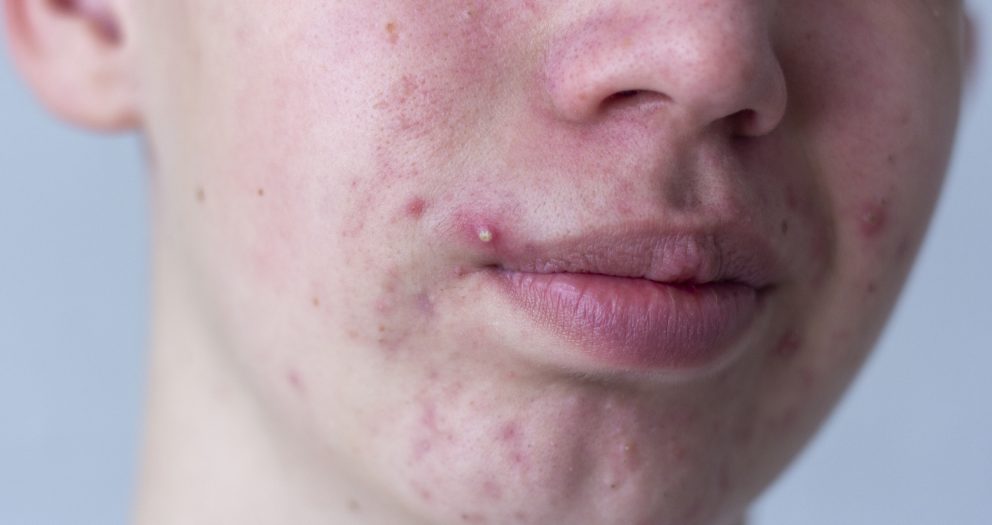What food causes acne
What food causes acne, is another question which has also led to some misunderstandings about the impact of food as a cause of acne and its outbreaks. Generally speaking, the relationship between acne and food has remained controversial. Nevertheless, research has found that some food types can play an important role in the development of acne.
Groups of acne related foods
In this article we shall be looking at the types of food that influence the formation of acne and also point out the importance of your diet. Here they are:
Refined Sugars and Grains
According to five trusted sources, people who have acne are known to consume more refined foods of sugars and grains than people who do not have acne. These refined carbohydrates consist of:
- White rice and noodles
- Pasta made from white flour
- Sodas and sugar-sweetened beverages
- Sweeteners such as agave, cane sugar, maple syrup and honey
- Crackers, cereal or desserts made from white flour.
In a study that involved two groups of people that consumed two different types of carbohydrates, it was found that people who consumed refined sugars had a 30% greater risk of having acne.
Those who habitually consumed cakes and pastries had a 20% greater risk of developing acne.
The increased risk was attributed to the effects that refined sugars have on levels of blood sugar and insulin. Refined sugars are quickly absorbed into the blood stream increasing blood sugar levels.
As sugar levels rise, Insulin levels also increase to help push blood sugars out of the bloodstream into the cells. This development is bad for people with acne as insulin tend to promote hormonal acne. People who don’t consume food low in carbohydrates don’t develop acne.
Omega-6 Fatty Foods
These omega fatty foods especially from consuming corn and soy oils boost inflammation and acne levels as opposed to those who consume omega 3 fats from fish and walnut which are fewer.
This causes an imbalance between omega-6 and omega-3 fatty acids producing an inflammatory situation. While the imbalance does cause inflammation, more study is needed for more concrete answers.
For now, there appear to be some strong connections between omega-6 fatty acids and acne but more concerted effort in this direction is needed to arrive at conclusive results.
Chocolate
Ever since the 2920s, many people believed that chocolate the food that triggered acne outbreaks, but evidence to prove this claim conclusively is lacking.
Some casual studies have been carried out that link chocolate eating with a higher risk of developing acne, but sadly, the studies have not been able to actually prove that eating chocolate eating causes acne.
Fast Food
A diet rich in calories, fat and refined sugars has been strongly claimed to be the main cause of acne, especially in the western part of the U.S. There are enough examples of this type of food such as the popular burgers, hot dogs, French fries and nuggets, sodas and milkshakes.
These fast foods which are found mainly in the Western U.S., are believed to increase the risk of acne development.
A study which was carried out on five thousand Chinese teens together with young men and women found that these fast, fat rich foods were directly associated with a 45% higher risk of developing acne in those who consumed them.
The trusted source also found that those who often ate fast food increased their risk of developing acne by 17%.
Another related study of 2,300 men in Turkey found that habitual eating of sausages or burgers could be linked with an increased risk of developing acne by 24%.
The relationship between the consumption of burgers or sausages and a higher risk of developing acne is not completely clear and in order to justify their opinions, researchers have proposed that the eating habit may be genetically motivated that resulted in changes in hormone levels that stimulate acne growth.
It should also be borne in mind that most research on the connection between fast food and acne development used self-reported data. The disadvantage of this type of research is that it only highlights the patterns of diet and the risk of developing acne. It does not prove that fast food actually cause acne so more conclusive researches are needed.
Whey Protein Powder
This food type is a supplement full of amino acids and glutamine. They generate strong skin cell growth and enable them divide more quickly, which may lead to acne formation.
Amino acids contained in the whey protein can also stimulate the body so it can generate higher levels of insulin and insulin is known to be linked with the development of acne.
Some research studies have reported a direct link between the consumption of whey protein and acne development in male athletes.
In another study it was found there was a connection between the severity of acne and the number of days when whey protein supplements were used. A strong case for establishing a connection between whey protein and acne development is definitely on the horizon, but more research is needed.
Dairy Products
Many reliable sources cited in numerous studies have found a direct connection between milk products and severity of acne especially in teenagers.
Two studies found that young adults who habitually drank milk or ate ice cream were four more times likely to have acne than those who didn’t consume these dairy products. Unfortunately the studies were of poor standard.
Research up to the present has focused on teenagers and young adults but they have only shown a correlation between acne and milk but not a direct causal relationship. Two theories have been put forward in this direction.
First, Milk increases insulin levels, apart from its effect on blood sugar levels which may exacerbate severity of acne.
Second, Cow’s milk also contains amino acids which stimulates the liver to produce more IGF-1 which has been linked to acne development.
Personal Food Sensitivity
It’s been suggested that acne is solely an inflammatory disease because anti-inflammatory drugs have been successful in treating it, also that acne sufferers have high levels of inflammatory molecules in the blood.
Food sensitivities (Delayed hypersensitivity reactions) may also contribute to inflammation caused when the immune system makes a mistake in identifying food as a threat and attacks it (delayed hypersensitivity reactions).
This “attack” results in high levels of pro-inflammatory molecules to circulate in the body and may worsen the severity of acne. The risk of the immune system making a mistake is high due to the many types of foods that it can respond to.
This would then involve a drawn-out exercise in a process of eliminating the acne causing triggers and be left with those that don’t trigger acne development.
Conclusion
It’s obvious that it’s very difficult to single out a food or foods that have the capability of triggering acne development. It’s equally obvious that research efforts are also trying to answer the question of what food causes acne. It appears that researchers are slowly uncovering correlations between acne and food and the only task remaining is to establish which food actually triggers or causes acne development.










